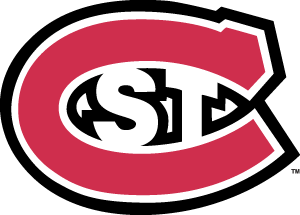
A while back, I wrote an article about my experience in using QR codes at KVSC-FM and how I have used them personally on my business cards. Now almost two months later, I have a few more suggestions for the successful use of QR codes in marketing. QR codes are still quite the craze and I am seeing more and more show up on event flyers, print advertisements and even as profile pictures on Twitter. Many of these examples were flawed in some way and this article is meant to help prevent others from making the same mistakes.
The first advice I might give is to not include a QR code on something just to have a QR code on it. I admit, I have fallen victim to this. In creating a few print advertisements for an upcoming concert sponsored by KVSC, I really wanted to include a QR code to fill some blank space in the ad. However, both kvsc.org and the online ticket site were not easy to use on a mobile device and the only thing I could think of was to have the QR code link to the box office phone number to purchase tickets. We decided to remove the QR code. Why? Although the QR code likely would have raised curiosity, the destination would most likely serve as a disappointment to anyone who scanned it. We were better off just posting the phone number (old fashioned, I know).
Another thing we can learn from the above example is that it’s usually best to link to a mobile site. If the ticket service we were using was a site such as stubhub.com, then the QR code would have been a great addition to the print ad because the user would probably be discovering something new and would be excited about using the mobile site to purchase tickets. Along these same lines, linking to my ePortfolio from my business cards was probably not the best idea as I implied in my previous post on QR codes. Although my ePortfolio looks fine on a mobile device, the text is small and navigation is difficult. When I print new personal business cards, I will link to this blog because WordPress automatically directs users to a mobile version.
Lastly, I would highly recommend using a URL shortener service such as bit.ly to create your QR code. One problem I have seen with some QR codes is that they are too dense and thus, difficult to scan quickly (if at all). I do not completely understand the science behind QR codes, but I do know that dense QR codes are not only more difficult to scan, but are also less attractive. By using a URL shortener (namely bit.ly), you will not only avoid this problem, but you will also be able to track basic analytics of the QR code. With bit.ly, you can track the number of scans, location of the referrer, if the link is being shared on social sites, when the code was scanned and whether the referral came from the QR code or from the link posted elsewhere.
For those of you who watch CSI, here’s a simple definition of a QR code:
I hope these additional tips help you in creating more effective marketing campaigns through the use of QR codes. As always, if you have any tips or questions, please comment below or send me a message on Twitter: @eric_wheeler. And remember, sharing gets you more friends!





